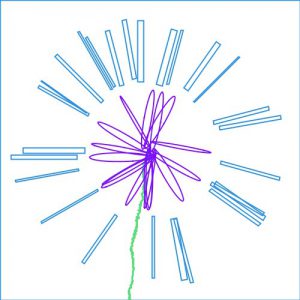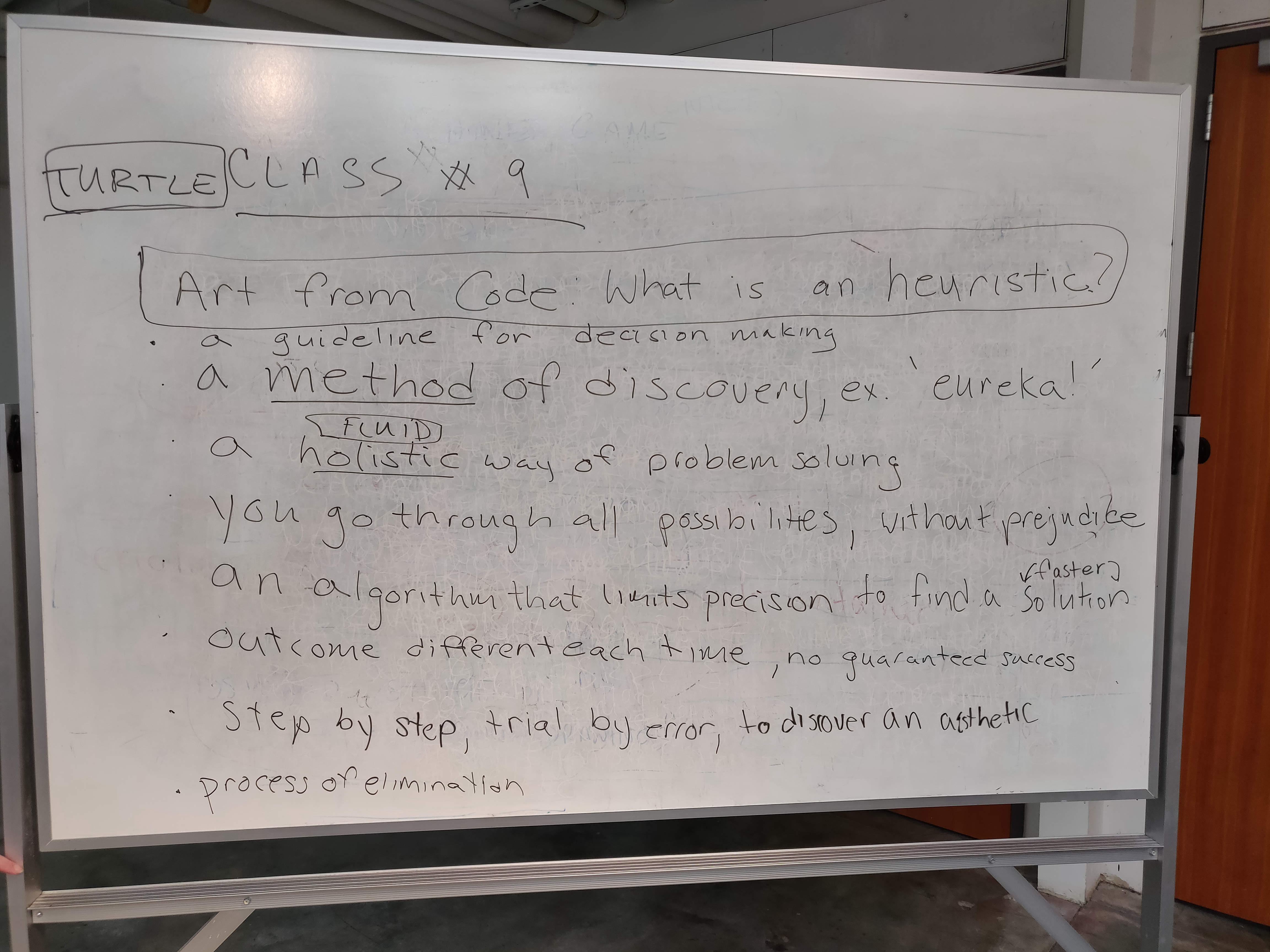
Grace Hertlein is known for her ability to impart organicism into what is commonly perceived as “artificial” works, like her works “The Field” or “Womb of Water.” Taylor often described Hertlein as someone who would deliberately push against the computer’s ability to make detailed, precise drawings and instead go out of her way to make the computer “mess up” in a way. However, these pieces incoprate randomness in order to impart a more natural figure to her shapes, and in doing so, makes the piece feel more organic instead of giving in the impression of being artificially generated. When compared to Georg Nees, whose defining factor is a more formulaic and structural type of style, Grace’s pieces dont seem more chaotic or disorderly, but instead gives her own kind of creativity. Hertlein does this by setting strict limits for the objects in her pieces, allowing them to expand or display randomness yet constructing a firm structure and format for the viewer to appreciate the artwork.
For my pieces, I opted for a more simple format centered in the middle of the canvas. This is because that I felt that because I could not well imitate Hertlein’s construction in her pieces, but I could allow the reader to retain a point of focus by “orbiting” the moving aspects around the center. I feel that this choice was good as I was able to retain a center of focus while allowing the viewer to wander off to the outer aspects, leading the audience to view the piece from all angles. Another feature that I feel was instrumental in keeping the viewer’s attention was the outer ‘anchor points’ that form a orderly circle. I did a few experiments in changing all the aspects of the piece to see what made sense, and making the outer circle random I feel like detracted to the piece as it kept the viewer’s attention away from the center, which is where I want the focus to be.

FlowerFor this piece, I attempted to construct a abstract flower with randomness. We may think of nature as very varied and pattern-less, but many of the worlds’s organisms follow very rigid and even complex patterns when they grow, flowers being one. My take on the flower is to make it more abstract then accurate, as I placed the center of the flower on a uneven rotation to add variance, and shaped the petals as rectangles in order to distinguish itself from more normal flowers. I also added a stalk based on a variation of a random walker that I feel captured the often twists and turns of a real stalk well. Overall, I feel that this piece captures the theme of nature Hertlein uses in her pieces while adding my own variation to it.

My last piece is titled Vortex, as that is what it looks like to me. It is a animated piece, where the shapes move in the pattern shown on the screen. The shapes start off with a slight transparency that builds to a more ‘solid’ overall shape over time. These shapes that move in the pattern are randomized, leading to the rather ‘fuzzy’ outline on the piece, in additional to how each point is different. Transparency is also a factor that adds to the organicism of this piece, as it allows for a slow build that is very apparent, as it allows for the shape to change over its lifetime, something Hertlein does albeit for a slightly different purpose. Because the limits on the randomness is even, the overall pattern comes out quite symmetrical but in my investigation of Herlein she does it too in her pieces, for example in her “Tomb of Water” the trees are all quite symmetrical in the overall structure. The colour choice I feel like was also good as a reference to Hertlein’s influence on this series, as this type of blue is used a lot in her pieces. Overall, I felt like this piece captured the flowing motion of water quite well due to its progressive nature and colour choice.
I enjoyed making this series as I was able to experience the process and motives of someone trying to break the mold of computer generated art and learnt many of the techniques Hertlein used to create her sort of “organic” art. I enjoyed applying a Nees sort of reputation in the code while having it appear to be less formulaic while retaining a lot of the structure that is sought after when talking about digitally generated art. Like how Hertlein envisioned a greater role for computer art in the age of social media and the internet, it shows that people still demand a sort of “imperfection” in a otherwise perfect system, a escape from the solid bars of modern infrastructure.


